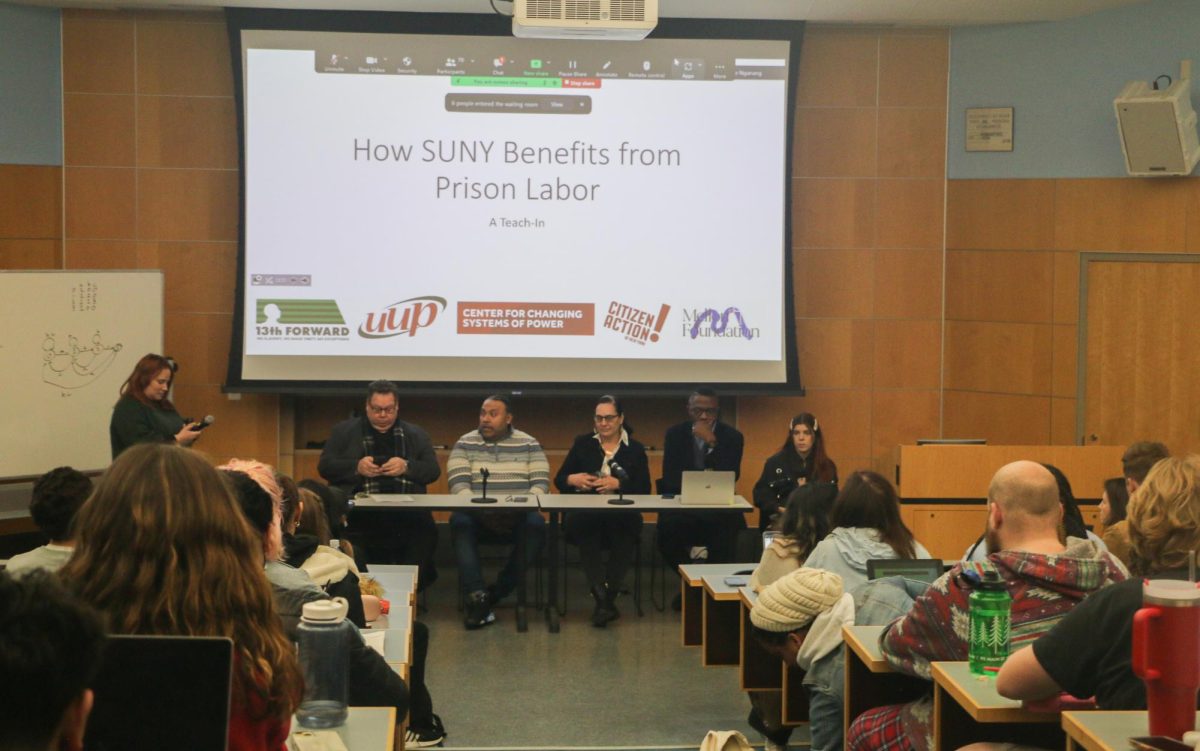As an international crisis related to the Ebola virus continues to develop, Stony Brook University President Samuel L. Stanley, the chair of the National Science Advisory Board for Biosecurity, spoke of the disease’s imminent risks.
“The epidemic is not slowing down, it’s speeding up,” Stanley said on Wednesday, Sept. 3 at the Staller Center for the Arts. “It’s one of the most lethal viruses that we know.”
Characterized by an extremely high mortality rate, this contagious RNA (ribonucleic acid) virus, which causes hemorrhagic fever and symptoms similar to influenza, has plagued various West African nations. Confirmed cases have been reported in Guinea, Liberia, Sierra Leone, Senegal and Nigeria, Africa’s most populated country.
“It is the biggest outbreak ever reported, and a fairly high number of people have died so far,” said Dr. Bettina Fries, the chief of the Division of Infectious Diseases at Stony Brook University Hospital. “Initially only remote rural areas were reporting cases. Now the disease is spreading and major cities like Lagos are also reporting cases.”
The lack of modern medical resources in the infected areas is of great concern to the Stony Brook medical community, Stanley said.
“These countries are among the poorest countries in the world,” he said. “They lack infrastructure. They lack resources. They lack very rudimentary health care facilities to treat people.”
In order to stop the deadly outbreak from “spiraling out of control,” Stanley said “there has to be more international support, and the United States would have to play an absolute key role in providing that support.”
Although there is no known cure for Ebola, experimental drugs and vaccines are being tested and developed in the United States.
“Because of support from the National Institutes of Health and the Department of Defense, we actually have things in the pipeline that can potentially prevent Ebola and potentially protect treatment of this disease,” Stanley said.
Stanley said that although the Ebola virus does not pose a high threat to the United States, the best defense against the disease penetrating the nation is to control and eliminate the infection in Africa. Demolishing the disease would require the provision of field hospitals and diagnostic tests as well as the addition of medical personal and containment gear, according to Stanley.
While slim, the highest risk factor for the Ebola infection entering the United States lies in air travel.
“Now, with jet travel, there is no natural geographic barrier to prevent infectious spreads,” Stanley said.
The average Ebola incubation period ranges from two to 21 days, therefore, “patients could potentially travel in the incubation time and then get sick here,” Fries said. As a precaution, various travel restrictions have been implemented throughout West Africa.
In the rare event that the illness would appear locally, Stony Brook University Hospital has ensured that proper preparations and procedures have been put in place following specific guidelines set by the New York State Department of Health’s Bureaus of Communicable Disease Control and Healthcare Associated Infections.
Dr. Susan Donelan, the medical director of the Healthcare Epidemiology Department, and her team are prepared to take the necessary precautions, and, as part of the guidelines, pointed out that the hospital is equipped to perform medical screenings and testing using protective equipment.
“Even if the chance is very, very low, in medicine we prepare for rare events,” Dr. Fries said. “Over the past weeks the hospital has put together a task force under the leadership of Dr. Donelan to draw up detailed instructions for the ‘what if’ scenario. Every detail is worked out so that we know what to do.”
Stony Brook Medicine researchers are also involved in investigating drugs and vaccines to help combat the virus, including the examination of antibody treatments and additional emerging medicines.
Stanley said “there is almost no risk, essentially, for the Ebola epidemic in the United States.” However, research into slowing and stopping the outbreak will continue.





















